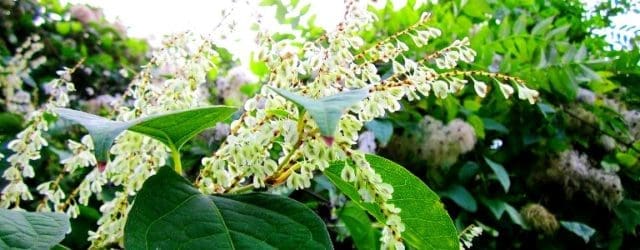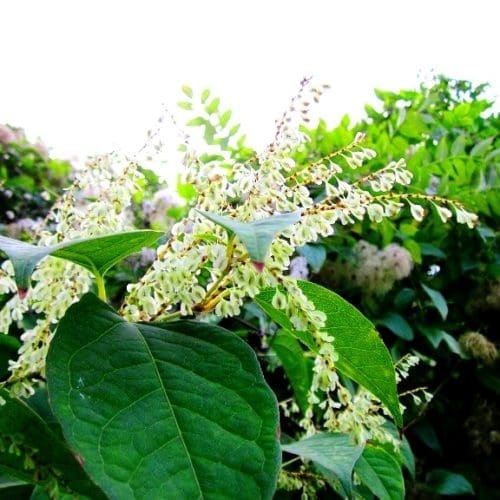Japanese Knotweed – It’s Knot that Bad
February 2022The flip side of being fortunate enough to own a property, is that, as soon as you do, you become very aware and anxious of the risks and costs associated with protecting it. One such risk, that has traditionally struck fear in the heart of even the most relaxed and carefree of homeowners, is Japanese knotweed. Mere mention of the words will lead to frantic google image searches and sleepless nights. However, in recent years, there has been a sea-change amongst the experts in relation to the extent of damage Japanese knotweed causes. Their conclusion is that the fear surrounding Japanese knotweed is out of all proportion to the threat it poses. As a consequence of this new research, in late January 2022, the Royal Institution of Chartered Surveyors (RICS) issued its long-awaited Guidance Note on “Japanese knotweed and residential property” (“the Guidance Note”). The stated mission of the Guidance Note is to provide “clarity and confidence in the market when Japanese knotweed is encountered”.
We discuss below the key points made in the Guidance Note and how this change in direction might affect professional negligence claims against surveyors going forwards.
What is Japanese Knotweed?
Japanese Knotweed is a large, highly aggressive and invasive weed. It has large hollow stems which look similar to bamboo and large, green, heartshaped leaves. Its roots (rhizomes) have been thought to grow as far as seven metres horizontally and two metres deep underground.
The only means of destroying Japanese Knotweed is to kill the roots. This can only be achieved by either multiple applications of herbicide or full excavation. If even a few centimetres of root are left in the ground, the plant may regrow.
The History of Japanese Knotweed and Claims against Surveyors
Japanese knotweed was thought to cause damage to property as its roots were believed to crack concrete, damaging foundations and other structures underground, such as cables or water pipes. Due to these concerns, RICS produced an information paper in 2012 for its members. The paper risk-assessed the presence of Japanese knotweed, measuring that risk on the basis of whether it was within 7 metres of the property dwelling or its boundary (the so-called 7 metre rule). This rule was embraced in mortgage lending decisions (with lenders refusing to lend in circumstances where Japanese knotweed was found within 7 metres). In that context, it is unsurprising that the failure to discover Japanese knotweed when surveying properties has generated a vast number of claims against surveyors. Such claims were indiscriminate to any actual damage caused by the knotweed, with claimants relying on the diminution in value (DIV) in the property, caused from its mere presence.
However, there has been a shift in opinion in recent years in relation to how problematic Japanese knotweed is. In May 2019 the House of Commons Science and Technology Committee published a report “Japanese Knotweed and the built environment”. This report concluded that the extent of concern surrounding Japanese knotweed was unwarranted. Whilst the report agreed that the weed is incredibly difficult to eradicate (and that in itself will ultimately affect the valuation of the property), the report found that the physical damage that it causes is less than other disruptive plants or trees, which do not have the same adverse effect on property transactions. The report concluded that substantive structures of sound foundation are unlikely to suffer structural damage due to Japanese knotweed. The 2019 report called on RICS to update its 2012 information paper to ensure its policies reflect the latest evidence. The 2022 Guidance Note is RICS eagerly awaited response.
What does the new RICS Guidance Note say?
Importantly the Guidance Note does not place a different duty on surveyors in terms of identifying the presence of Japanese knotweed. What is new is that, once Japanese knotweed is found, the distance-based risk assessment has been replaced with a more specific consideration of the impact of an infestation at a property. The new process does however include an objective categorisation of Japanese knotweed, which relies on a “decision tree” to categorise what action is necessary.
The starting point for this analysis is whether Japanese knotweed is on-site or off-site. If it is found on-site, then its corresponding management category is either A, B or C. If it is found off-site its management category is D. Type A management category is the most severe and is gauged by whether the Japanese knotweed is causing actual or visible damage to a building structure. If it is not, but it is restricting use of an amenity space, then it should be managed as category B. Both A and B have the same action recommendations. If surveying for a lender the valuer/surveyor should seek advice from a remediation specialist and recommend a mortgage retention pending that report. If surveying for a client, the valuer/surveyor should recommend that they seek advice from a remediation specialist.
If the Japanese knotweed falls into neither category A or B, than management category C will apply and no action is required for lending purposes. When advising a client, the valuer/surveyor should recommend the client seeks advice from a remediation specialist about any future management required. Category D applies when Japanese knotweed is off-site. Regardless of the proximately to the boundary, no mortgage retention advice is necessary unless in very exceptional circumstances (where there is a severe infestation and expensive defensive measures would be desirable). When advising a client, if the knotweed is within 3m of the boundary, then the valuer/surveyor should recommend the client seeks advice from a remediation specialist about possible encroachment.
Claims against surveyors going forward
The RICS Guidance Note is effective from 23 March 2022. A RICS guidance note is a professional standard for the purposes of the RICS Rules of Conduct. Guidance notes are therefore an important tool in regulatory or disciplinary proceedings, in deciding whether a member has acted with reasonable competence. They are also often used as threshold in any legal proceedings.
In terms of the duty of care owed by surveyors, the measure of adequacy of an inspection remains one of “reasonableness”, which will depend on the particular circumstances of each inspection. The requirements for inspecting the grounds will vary between survey levels. It is noteworthy that the Guidance Note makes clear that even a ‘comprehensive’ survey must be understood in the context of the whole property of which the grounds are only one element. RICS state that it must not be interpreted as “requiring a plant-by-plant check for Japanese knotweed”. RICS fully recognises the difficulties faced by inspectors, such as dense planting, season of inspection and boundaries that are difficult to see. It is only when Japanese knotweed is “clearly visible on site during the normal course of an inspection” that it will be reasonable to expect it to be identified by a valuer or surveyor.
As stated above, the distance-based risk assessment for Japanese knotweed, has been replaced with a more specific consideration of the impact of an infestation at a property. Whilst this is clearly a more common sense and proportionate approach, it may lend to disputes around whether the knotweed should have been categorised as particular management category over another. This is particularly so when assessing between management category B and C, where B requires a mortgage retention but C does not. The Guidance provides advice on when there will likely be an interference with amenity space, but the subjective nature of such analysis may lend itself to negligence claims. In our view, in instances where Japanese knotweed has been clearly identified, surveyors should err on the side of caution when categorising the same, and should stress to their clients that specialist advice should be obtained to provide certainty.
In the event a breach of duty of care (for failure to advise on the existence of Japanese knotweed) is established against a surveyor, we consider that the RICS Guidance Note is helpful in terms of defending the extent of loss caused by the breach. Commonly, claimants have historically sought redress for (i) an alleged DIV of the property, on the basis it is blighted by the presence and potential return of Japanese knotweed (and is also potentially unmortgageable) and (ii) the remedial costs to treat the infestation.
The Guidance Note makes clear that the assumption that Japanese knotweed automatically poses a risk to buildings within a certain arbitrary distance, has been scrapped. Instead, the focus is on what actual damage the weed is doing and what real effect it has on the use and enjoyment of the garden. If there is no such damage/loss of enjoyment, then no action needs to be taken in terms of any mortgage retention. As such, we consider that for category C and D knotweed, any effect on value is likely to be limited to the remediation costs only. In this respect, the Guidance Note is clear that the focus is on “management” and “control” of the problem rather than to “automatically strive for eradication”. As such, the remediation costs should arguably be fairly limited in most instances.
Above all the Guidance Note will undoubtedly help alleviate the current fear amongst property owners and lenders in relation to Japanese knotweed. We are hopeful that as the stigma surrounding knotweed becomes more proportionate (and less profitable for the claim farmers), disputes will in turn reduce.
Download PDF







